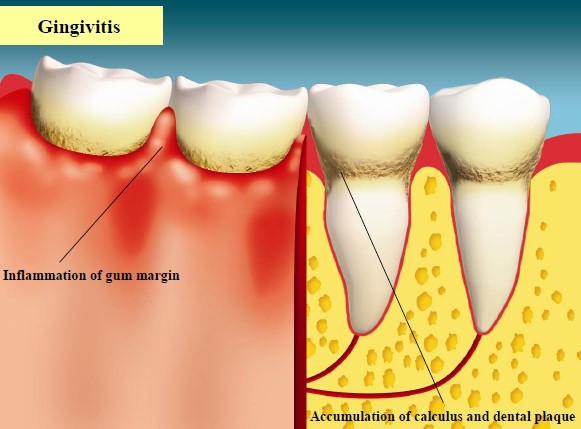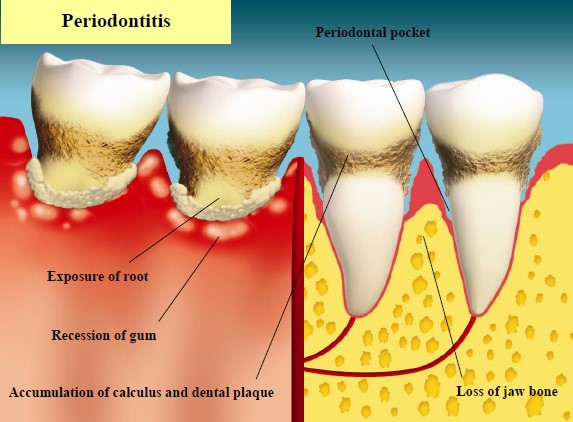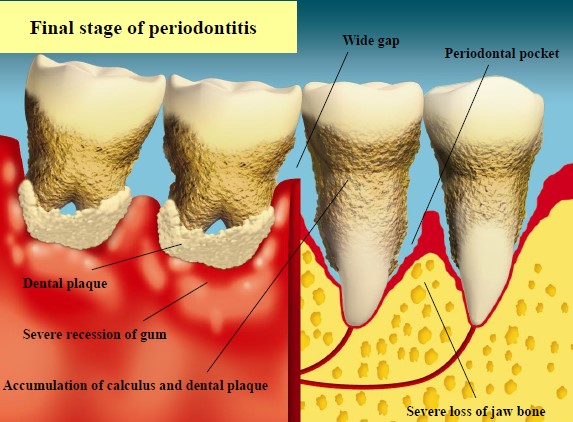Development of gum disease is due to the presence of dental plaque that adhered to the tooth surface. If the oral hygiene is poor, dental plaque will accumulate along the gingival margin. The bacteria from the dental plaque release toxins that irritate the periodontal tissues (tissues surrounding a tooth) including the gums, periodontal membrane, jaw bone, etc., leading to development of gum disease
If dental plaque has accumulated for a period of time, the gingival margin will be inflamed leading to mild gum disease (gingivitis). If the body defense system is not good with impaired healing capacity, the periodontal tissues including the gums, periodontal membrane and jaw bone, etc., will be further damaged and gradually develop severe gum disease (periodontitis).
When the teeth are not cleaned thoroughly, dental plaque accumulates at the gingival margin and interdental surface. The bacteria from the dental plaque secret toxins that irritate the gum, leading to inflammation and formation of gingivitis. The dental plaque can be calcified by the saliva to form calculus. The rough surface of the calculus further traps more dental plaque. The gum continuously inflamed and may even develop severe periodontal disease.

When the oral hygiene is persistently poor, the periodontal tissues will be continuously under inflammation and destruction. The gum becomes detached from the root surface, such that a tiny space called periodontal pocket will be formed. Food debris, dental plaque and calculus will accumulate more easily inside the periodontal pocket, leading to more severe destruction of tissues, gradually develop periodontitis. There may be pus exudating from the periodontal pocket and leading to formation of abscess. Eventually the gum and the supporting bone will recede, and the root will be exposed that increase the chance of getting root decay.

When the inflammation and destruction are getting worse, the periodontal tissues like the gum and supporting bone will be badly destroyed and receded. The tooth loses its support and becomes mobile and drifted. Finally it may even come out by itself.
